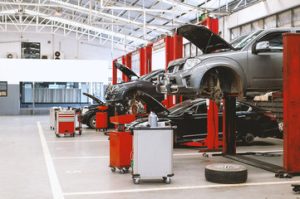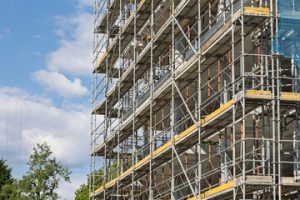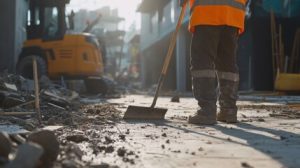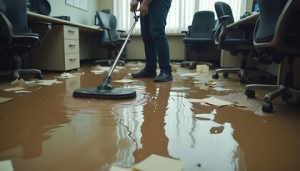Whether you’ve been involved in a minor fender bender or a major accident, it is essential to recognize the signs that your vehicle needs immediate auto body repair services. Ignoring these indicators can lead to bigger issues that threaten your safety and the resale value of your car.
Rattling, scraping, and grinding sounds indicate structural damage that requires immediate professional attention. Uneven tire wear can also be an indicator of underlying problems that must be addressed immediately. Call an expert or Find Out More Here.

Visible Damage
Whenever a vehicle is involved in an accident, the first thing people notice are the obvious signs of damage, such as bent metal, cracked glass, and dented bumpers. However, if your car looks like it survived a minor fender bender, don’t breathe a sigh of relief just yet. The force of the collision can cause hidden damage that could compromise your safety and lead to expensive repairs down the road if not promptly identified and addressed.
Structural damage is one of the most serious types of hidden collision damage. Even a seemingly minor collision can affect your vehicle’s frame and chassis, which in turn can cause misalignments that lead to uneven tire wear and handling issues.
The impact of a crash can also damage mechanical parts such as the engine and transmission, which can result in performance issues or complete failure down the road. Identifying and promptly addressing these hidden damages will help you maintain the long-term reliability of your vehicle.
It’s important to be vigilant in identifying these signs, which can range from unusual noises to a noticeable loss of power or fluid leaks. Pay attention to any changes in the way your vehicle drives or handles, and make sure to mention these issues to the auto body repair technician conducting your inspection.
Unusual Noises
If you’re noticing unusual sounds from your vehicle, it’s important to pay attention. Unusual noises like knocking, whining, humming, or rattling can be an indicator of serious problems that require immediate repair. Likewise, any unusual smells can indicate a problem with one of the car’s major systems, such as the engine, transmission, or brakes.
If your vehicle is leaving behind puddles of fluid, it’s an indication of a leak in one of its critical systems. If the puddles are red or brown, it’s likely engine oil, while green, yellow, or pink fluid can indicate coolant. Leaks in these systems can be dangerous if left untreated, so it’s essential to get them repaired immediately.
Any unusual sounds or smells from your vehicle’s engine should be taken seriously, especially if they’re accompanied by excessive smoke or steam. Smoke that dissipates quickly could be condensation burning off, but persistent smoke or steam may indicate a problem with the engine. Different colors of smoke can suggest a number of issues, such as an overheating engine, a damaged catalytic converter, or a faulty cooling system.
Any misaligned panels or gaps in the body of your car should be examined by a professional right away. Over time, these problems can lead to structural damage that will need to be addressed with a full auto body repair. They can also result in deteriorating paint, which can leave your car vulnerable to rust and corrosion.
Uneven Tire Wear
Uneven tire wear can be caused by a wide variety of issues, but it’s often an indication that the vehicle has been in a collision. Uneven tire wear can make it difficult to control the car and increase the risk of future damage and safety hazards.
Insufficiently inflated tires or neglecting to follow the manufacturer’s recommended tire rotation schedule can also cause uneven wear patterns. For example, underinflated tires tend to wear the edges more than the center, while overinflated tires cause the centers to wear down faster.
Damaged or worn-out shock absorbers and struts can also affect how evenly your tires contact the road, leading to uneven tire wear. In addition, improper wheel alignment can also cause tire wear and other problems.
Uneven tread patterns can indicate several issues, including feathering (the dipping or raised areas in the middle of your tire’s tread), inner or outer edge wear, and toe wear (which looks like saw-teeth).
Check your tires on a regular basis for any signs of unusually uneven tread wear. Any noticeable deviations should be examined and repaired immediately to avoid costly repairs and extend the life of your tires. In addition, it’s always a good idea to have your tire pressure checked regularly to ensure they are properly inflated. This will help maintain even tire wear and improve your driving experience.
Faulty Lights
Your vehicle’s lights are crucial for safety while driving, so you need to be sure they are functioning properly. If your headlights or taillights are flickering or not shining brightly, this could indicate that there is a problem with one of the electrical components. Faulty lights should be addressed immediately to ensure your vehicle is visible on the road and you can safely drive.
Unusual noises or vibrations while driving can also indicate underlying problems with the body of your vehicle. If you hear rattling, squealing, or clunking sounds, this could mean that there is structural damage to the frame or suspension of your car. It is best to have any unusual noises inspected by a professional to determine the root of the issue and prevent further damage.
Another warning sign is if your fuel efficiency has decreased significantly after a collision. Reduced fuel efficiency is not a normal occurrence, and it could indicate that the frame of your vehicle has been damaged.


